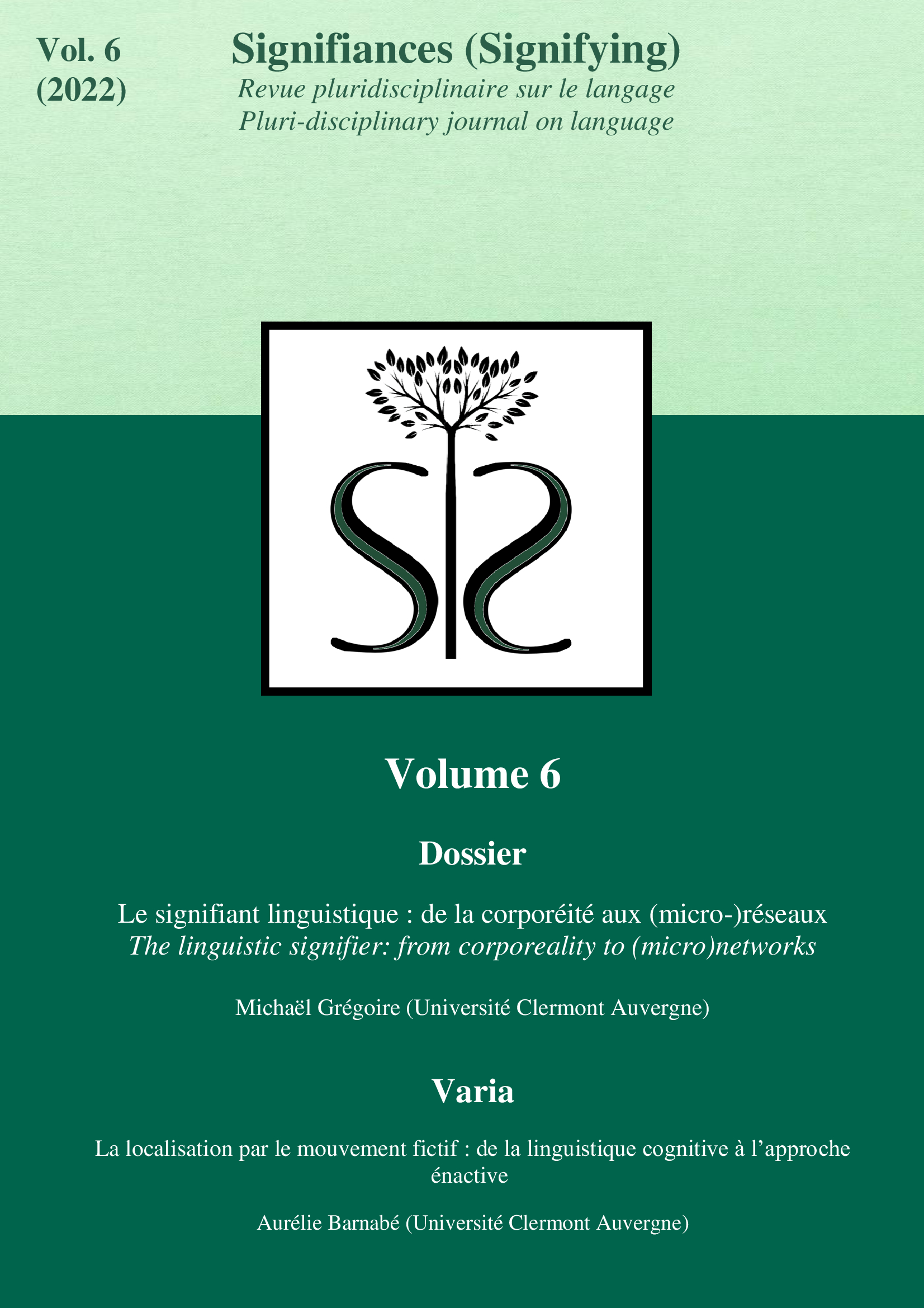Chronosyntactic variations in Spanish correlative structures. Between interlocutionary strategies and consolidation of an emerging construction
DOI:
https://doi.org/10.52497/signifiances.v6i1.334Abstract
This study focuses on the chronosyntactic variations of Spanish correlative structures (t-... k-... structures and echoing structures), discussing their different operative temporalities and, as a consequence, their different interpretations. The analysis of the intersequential chronosyntax (succession of correlative sequences), and of the intrasequential chronosyntax (place of correlation markers within syntagms) shows that these two syntaxes are partly linked and that they depend on various interlocutionary strategies, sometimes based on iconic processes. Moreover, this paper asserts that the dominant syntax, which emphasizes the diptych organization of the correlation and reinforces the echo phenomena, favors the identification of the correlative structure and its anchoring in the memory, thus facilitating its enunciation/interpretation and the emergence of correlative meaning.


